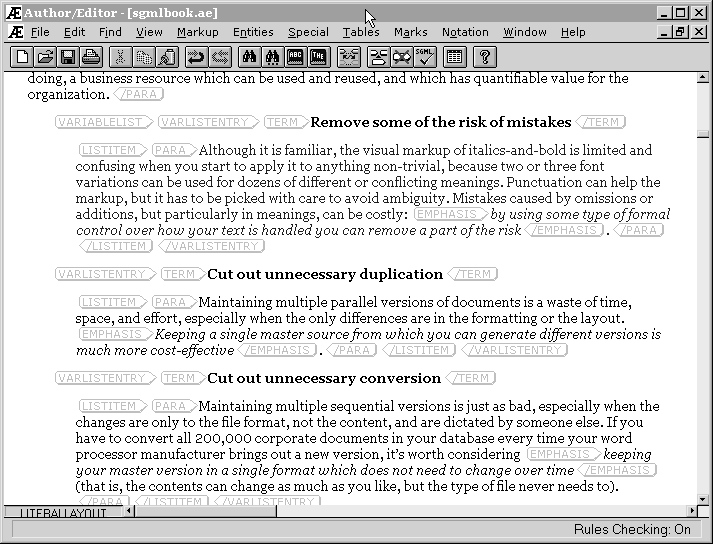Author/Editor ☑
RulesBuilder ◯
This was one of the most widely-used editors: easy to use and fuss-free in operation. Its interface later became familiar to a much wider audience as it formed the basis for the HTML editor HoTMetaL and the XML editor XMetaL. Installation was from CD.
Author/Editor would immediately open an arbitrary SGML file, but would only enter full synchronous typographic mode if the DTD was known and precompiled. For documents using previously unencountered document types, it acted as a plaintext editor until provided with a compiled DTD.
Figure 3. Author/Editor editing a DocBook document (left); RulesBuilder compiling a DTD (right)

For full use, the separate
RulesBuilder program was needed.
The assumption was that the DTD was a
corporate asset that would not be available to an end-user,
only to an administrator; and even outside that type of
managed framework, it would be undesirable for arbitrary
users to be able to modify what should be a stable
DTD. The administrator would compile the
DTD to a proprietary
.rb file which
could be given to an end-user.